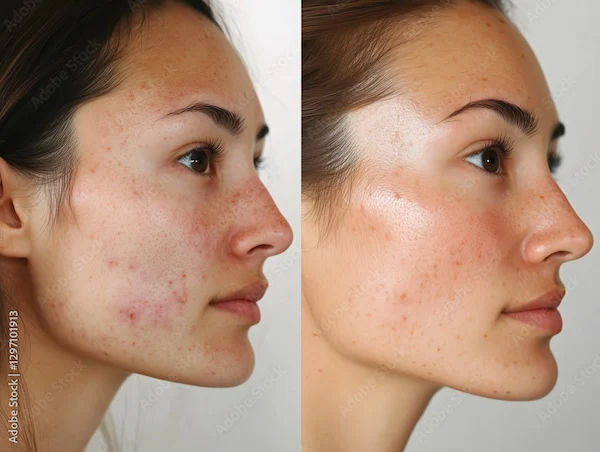How to Reduce Melanin in Eyes?
Discover the causes of increased melanin in eyes, symptoms, potential risks and complications. Learn the available medical treatments and suggested lifestyle changes to reduce melanin in the eyes.

Written by
Last updated on 3rd Jul, 2025
People tend to have different eye colours; some have black, while some have brown, green, or blue. This happens because of a pigment called melanin that is produced by special cells called melanocytes.
However, in some cases, the amount of melanin in the eye increases in an abnormal manner, making the iris look much darker. Read the following section to learn about the causes, symptoms, and treatments related to high melanin in the eyes.
Causes of Increased Melanin in Eyes
Melanin increases in the eye mainly due to two factors:
Genetic Factors: Melanin production in the eye is mainly regulated by three genes: OCA2, HERC2, and TYR. These three genes are responsible for the production, transport and storage of melanin. Having even the slightest variation in these genes may lead to an abnormal increase in melanin production in the eye.
Environmental Factors: The primary environmental factor is exposure to sun rays or ultraviolet (UV) rays. On being exposed to sunlight, the melanocytes in the eye tend to produce more melanin to protect the delicate eye tissues. Hence, the iris appears darker.
Apart from these, ageing and some medications such as antibiotics, antimalarials or chemotherapeutic agents are known to increase eye melanin.
Symptoms of High Melanin in Eyes
The increased amount of melanin in the eyes is often seen in conditions such as ocular melanosis, which manifests as:
Strabismus: The pupils don't point in the same direction.
Nystagmus: Very rapid involuntary eye movements are seen.
Blurred Vision: The visual clarity gets reduced.
Head Tilting: People tilt their heads in order to align their eyes for visual clarity.
Abnormal Eye Colour: A darker iris is seen, along with patches of hyperpigmentation in some cases.
Poor Depth Perception: The distance between two objects becomes difficult to perceive.
Light Sensitivity: Discomfort and pain in the eyes when exposed to bright lights.
However, every case with high melanin levels might not lead to visual impairments. An ophthalmologist must be consulted in case of any vision changes or suspected high eye melanin.
Medical Treatments to Reduce Melanin in Eyes
Melanin in the eyes is reduced through two treatment options:
Laser Therapy: It is an invasive procedure that works by removing brown melanin from the anterior layers of the iris.
Surgeries: Some people opt for surgical methods to change their eye colour. Three main surgeries are performed to change the eye colour:
Iris Implants (artificial iris is placed over existing iris)
Laser Pigmentation Removal (releases layers of melanin to reveal the lighter colours)
Keratopigmentation (channels are created in the cornea using needles or laser).
All the surgical procedures have a high risk of corneal damage. Hence, skilled ophthalmologists should be consulted before making any decisions regarding eye surgery.
Lifestyle Changes to Reduce Melanin in Eyes
Following are a few lifestyle tips which individuals can follow to reduce melanin in the eye:
UV Ray Protection: Whenever stepping outside, make sure to wear sunscreen and sunglasses to protect the eyes from the harmful UV rays.
Proper Sleep: A proper sleep schedule of 7 to 8 hours should be maintained to reduce oxidative stress and maintain optimum melanin levels.
Quit Alcohol: Cutting down on alcohol and quitting smoking have proven to be effective in maintaining proper melanin levels in the eye.
Proper Diet: Consume a balanced diet containing foods rich in anti-oxidants, omega-3 fatty acids, etc., that help to regulate melanin production in the eye.
However, individuals should consult an ophthalmologist before applying anything inside their eyes.
Potential Risks and Complications in Reducing Eye Melanin
According to the American Academy of Ophthalmology, a warning was issued telling people about the dangers associated with surgeries to change the colour of the eyes. Here are its key pointers:
One of the major complications was vision loss, which occurred due to bacterial or fungal infection during the healing period.
If the surgeries are not performed correctly, people may face bleeding-related issues and other problems.
Individuals who went for iris implants suffered from increased IOP (Intra-ocular pressure), which eventually led to the development of glaucoma. Others faced corneal injury and light sensitivity.
People who opt for keratopigmentation might face reactions to the dye, leading to uveitis, or the dye might leak into the eye.
Conclusion
The eyes are one of the most delicate organs of the body. Hence, they should be treated with utmost care and priority. Increased eye melanin can interfere with one’s daily activities if it causes gradual vision loss.
So, if individuals suspect an increased amount of melanin in their eyes or are facing visual problems, it will be beneficial for them to get in touch with an experienced ophthalmologist. Furthermore, wearing sunglasses and wide-brimmed hats when outside in the sun can act as effective preventive measures.
Consult Top Ophthalmologist
Consult Top Ophthalmologist

Dr. Rajeev Gupta
Ophthalmologist
24 Years • MBBS, MS (Ophthalmology)
Ghaziabad
Om Eye & Gynae Centre, Ghaziabad
Dr. S Venkateswaran
Ophthalmologist
35 Years • MBBS, PGD (OPTHALMOLOGY)
Tiruvannamalai
Shiva Eye And General Hospital, Tiruvannamalai

Dr. Esha Trideep Kshatriya
Ophthalmologist
3 Years • MBBS , MS (OPHTHALMOLOGY)
Bhuj
KCRC-Blind Peoples Association, Bhuj

Dr. Balakrishna Balaka
Ophthalmologist
6 Years • MBBS, MS Ophthalmology
Visakhapatnam
Balakrishna eye clinic, Visakhapatnam
Dr. Praveen Kant Sharma
Ophthalmologist
11 Years • MBBS,MS (Eye), Fellowship in Glaucoma
Jaipur
Dev Drishti Eye Hospital, Jaipur

